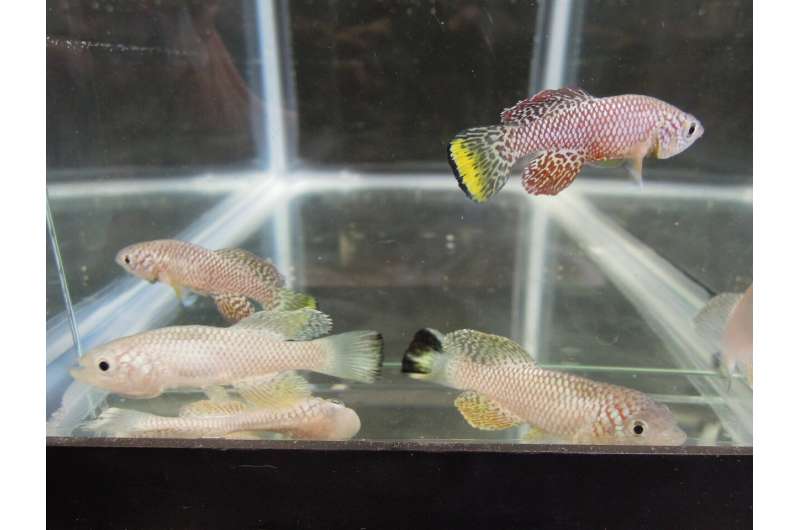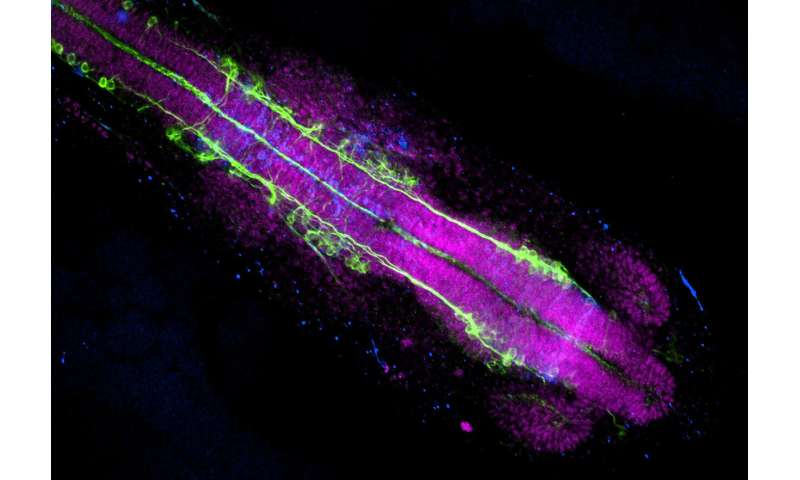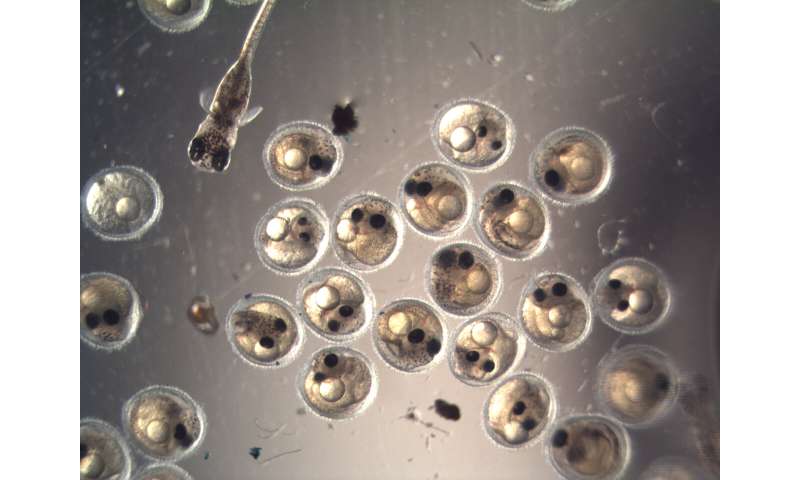February 21, 2020 report
Genetic study uncovers clues to explain how killifish stop aging during diapause

A team of researchers at Stanford University working with others from the Stowers Institute for Medical Research, the Howard Hughes Medical Institute and The University of British Columbia has uncovered some clues regarding how the African killifish is able to pause the aging process during a diapause. In their paper published in the journal Science, the group describes a genetic analysis they conducted with the fish and what they learned from it. Marc Van Gilst with the University of Washington has published a Perspective piece on the work done by the team in the same journal issue.
The African turquoise killifish is one of a few kinds of creatures that are able to put themselves into a state similar to suspended animation for periods of time to survive harsh conditions—but only when they are still embryos. The killifish live in ponds in Mozambique and Zimbabwe that dry up periodically, and sometimes remain dry for months or years at a time. To survive in such an environment, the killifish has evolved the ability to undergo a diapause when necessary. Prior research has shown that doing so allows the killifish to pause the aging process for months or even years. When the rains return and the pond fills with water, the killifish exit their diapause, mature and live as adults for a few months, but it is unclear how they do it.
In this new effort, the researchers conducted a genetic study of killifish embryos that revealed some clues. The data showed that many of the cells involved in cell growth and organ development are put on hold, while other cells such as those responsible for producing proteins that prevent muscle deterioration keep on doing their job—the result is an embryo with a metabolism put on hold during a diapause.
Testing of the fish with a control group showed that those fish that enter a diapause are able to halt virtually all aging—those that never enter a diapause have a lifespan of just a few months, from embryo to adult. Those that do enter a diapause live for as long as two years.
-

The African killifish embryo developmentally suspended in the state of diapause, with developed brain comprise neural stem cells, progenitor cells, radial glia, and differentiated neurons. Credit: Chi-Kuo Hu -

The African killifish embryos break diapause to resume development and hatch in the new rainy season. Credit: Chi-Kuo Hu
More information: Chi-Kuo Hu et al. Vertebrate diapause preserves organisms long term through Polycomb complex members, Science (2020). DOI: 10.1126/science.aaw2601
Journal information: Science
© 2020 Science X Network





















